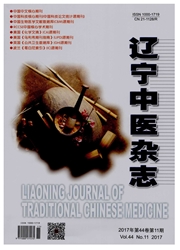

 中文摘要:
中文摘要:
目的:对比观察连翘提取物的解热作用,探讨连翘提取物研究中适用的发热模型及推测可能的作用机制。方法:建立酵母(2 g/kg)、脂多糖(LPS)(20μg/kg)致大鼠发热模型,分别测量大鼠的肛温,考察造模后灌胃给药10m L/kg生理盐水、0.2 g/kg阿司匹林、1.25,2.5,5 g/kg连翘提取物后不同时间内大鼠的体温变化。结果:酵母和LPS致热模型制作成功,1.25,2.5 g/kg连翘提取物对发热模型动物的体温影响较小,5 g/kg连翘提取物和阿司匹林可减缓发热模型动物的体温升高趋势,对LPS致热模型的解热作用更显著。结论:连翘提取物对酵母和LPS致热模型有解热作用,对LPS致热模型的解热作用较酵母致热模型更显著,推测其可能是通过抑制PGE2的合成和释放来发挥解热作用。
 英文摘要:
英文摘要:
Objective:To compare the antipyretic effects of Forsythia extract on different febrile model rats and speculate the antipyretic mechanism. Methods :Febrile models were established by yeast(2 g/kg)or LPS(20 μg/kg)in the study. The rat rectal temperature was measured after oral administered with normal saline ( 10 mL/kg), aspirin (0.2 g/kg), Forsythia extract ( 1.25, 2. 5,5 g/kg)at different time respectively. Results: Yeast- induced febrile model and LPS- induced febrile model were established successfully. Forsythia extract (5 g/kg)and aspirin (0.2 g/kg) decreased the temperature in febrile model rats. While For- sythia extract ( 1.25,2. 5 g/kg)didnotshow a significant antipyretic effect. Conclusion:These findings suggest that Forsythia extract possesses antipyretic activity on yeast - induced, LPS - induced febrile model ratsand the antipyretic effect on LPS - induced febrile model rats is more significant. The mechanism of Forsythia extract may be related to the inhibition of synthesis and release of PGE2.
 同期刊论文项目
同期刊论文项目
 同项目期刊论文
同项目期刊论文
 期刊信息
期刊信息
